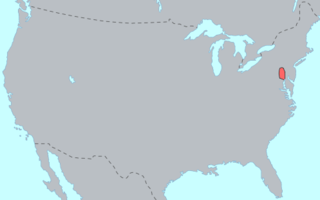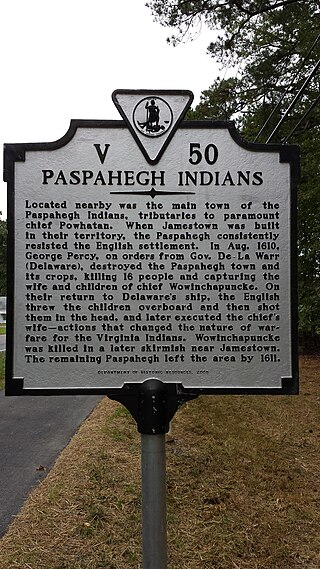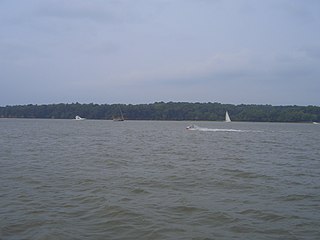
The Algonquian are one of the most populous and widespread North American native language groups. They historically were prominent along the Atlantic Coast and in the interior regions along Saint Lawrence River and around the Great Lakes. This grouping consists of the peoples who speak Algonquian languages.

The Susquehannock, also known as the Conestoga, were an Iroquoian people who lived in the Susquehanna River watershed in what is now Pennsylvania. Their name means “people of the muddy river.”

The Paspahegh tribe was a Native American tributary to the Powhatan paramount chiefdom, incorporated into the chiefdom around 1596 or 1597. The Paspahegh Indian tribe lived in present-day Charles City and James City counties, Virginia. The Powhatan Confederacy included Indigenous peoples of the Northeastern Woodlands who spoke a related Eastern Algonquian languages.

The Monongahela culture were an Iroquoian Native American cultural manifestation of Late Woodland peoples from AD 1050 to 1635 in present-day Western Pennsylvania, western Maryland, eastern Ohio, and West Virginia. The culture was named by Mary Butler in 1939 for the Monongahela River, whose valley contains the majority of this culture's sites.

The Pamlico were American Indians of North Carolina. They spoke an Algonquian language also known as Pamlico or Carolina Algonquian.

The Sassafras River is a tributary of the Chesapeake Bay on the Delmarva Peninsula in the United States. It is approximately 22 miles (35 km) long and starts in western New Castle County, Delaware, and along the boundary between Cecil County, Maryland on the north and Kent County, Maryland on the south. It rises southwest of Middletown, Delaware and ends at the Chesapeake Bay in a wide mouth between Howell Point near Betterton, Maryland and Grove Point on Grove Neck.

Werowocomoco was a village that served as the headquarters of Chief Powhatan, a Virginia Algonquian political and spiritual leader when the English founded Jamestown in 1607. The name Werowocomoco comes from the Powhatan werowans (weroance), meaning "leader" in English; and komakah (-comoco), "settlement". The town was documented by English settlers in 1608 as located near the north bank of the York River in what is now Gloucester County. It was separated by that river and the narrow Virginia Peninsula from the English settlement of Jamestown, located on the James River.

The Piscataway or Piscatawa, are Native Americans. They spoke Algonquian Piscataway, a dialect of Nanticoke. One of their neighboring tribes, with whom they merged after a massive decline of population following two centuries of interactions with European settlers, called them the Conoy.

The Yaocomico, also spelled Yaocomaco, were an Algonquian-speaking Native American group who lived along the north bank of the Potomac River near its confluence with the Chesapeake Bay in the 17th century. They were related to the Piscataway, the dominant nation north of the Potomac.

The Doeg were a Native American people who lived in Virginia. They spoke an Algonquian language and may have been a branch of the Nanticoke tribe, historically based on the Eastern Shore of Maryland. The Nanticoke considered the Algonquian Lenape as "grandfathers". The Doeg are known for a raid in July 1675 that contributed to colonists' uprising in Bacon's Rebellion.
Henry Spelman (1595–1623) was an English adventurer, soldier, and author, the son of Erasmus Spelman and nephew to Sir Henry Spelman of Congham (1562–1641). The younger Henry Spelman was born in 1595 and left his home in Norfolk, England at age 14 to sail to Virginia Colony aboard the ship Unity, as a part of the Third Supply to the Jamestown Colony in 1609. He is remembered for being an early interpreter for the people of Jamestown as well as writing the Relation of Virginia, documenting the first permanent English colonial settlement in North America at Jamestown, Virginia, and particularly the lifestyles of the Native Americans of the Powhatan Confederacy led by Chief Powhatan.
The Nacotchtank were an indigenous Algonquian people who lived in the area of what is now Washington, D.C., during the 17th century. The Nacotchtank village was within the modern borders of the District of Columbia along the intersection of the Potomac and the Anacostia river.
The Patuxent or Pawtuxent were one of the Native American tribes living along the western shore of the Chesapeake Bay. They spoke an Algonquian language and were loosely dominated by the Piscataway.

The protohistoric period of the state of West Virginia in the United States began in the mid-sixteenth century with the arrival of European trade goods. Explorers and colonists brought these goods to the eastern and southern coasts of North America and were brought inland by native trade routes. This was a period characterized by increased intertribal strife, rapid population decline, the abandonment of traditional life styles, and the extinction and migrations of many Native American groups.
The history of Native Americans in Baltimore and what is now Baltimore dates back at least 12,000 years. As of 2014, Baltimore is home to a small Native American population, centered in East Baltimore. The majority of Native Americans now living in Baltimore belong to the Lumbee, Piscataway, and Cherokee nations. The Piscataway people are indigenous to Southern Maryland, living in the area for centuries prior to European colonization, and are recognized as a tribe by the state of Maryland. The Lumbee and Cherokee are indigenous to North Carolina and neighboring states of the Southeastern United States. Many of the Lumbee and Cherokee migrated to Baltimore during the mid-20th century along with other migrants from the Southern United States, such as African-Americans and white Appalachians.
The Matapeake were an Indigenous Algonquian people who lived on Kent Island, which they referred to as Monoponson in their language. The Matapeake, along with the Choptank, Lenape, and Nanticoke, were the four most prominent Algonquian tribes living in Maryland.
The Ozinie, also known as the Wicomiss, were a group of Native Americans living near modern-day Rock Hall, in Kent County, Maryland. They were hunter-gatherers and fished.

Opossunoquonuske, was a Weroansqua of an Appomattoc town near the mouth of the Appomattox River. Weroansqua is an Algonquian word meaning leader or commander among the Powhatan confederacy of Virginia coast and Chesapeake Bay region. She was known as the queen of Appamatuck, The community she led was large enough to provide an estimated twenty warriors to the Powhatan Confederacy.

The land that is now the State of Maryland in the United States of America was widely populated by indigenous peoples prior to European arrival, however only 2% of the state's population self-reported as being some part Native American in the 2020 US census. Native Americans have inhabited the area since c. 10,000 BC, with Capt. John Smith surveying and making contact with groups in the Chesapeake Bay in the early 1600s. European settlers first began to inhabit Maryland in 1634, but as the century progressed, violence and hostility between Native Americans and European settlers increased. Various treaties and reservations were established in 1600s and 1700s, but many Native peoples left the area in the mid-to-late 18th century. Today, there are Native American populations around the state, including a sizable Lumbee population in Baltimore.
The Massawomeck were an Iroquoian people who lived in what is now western Maryland and eastern West Virginia during the early 17th century. Their territory encompassed the headwaters of the Monongahela, Youghiogheny and Potomac rivers.












